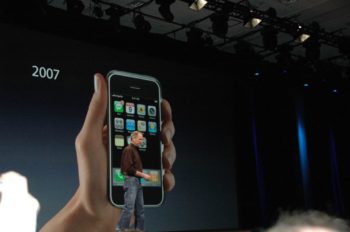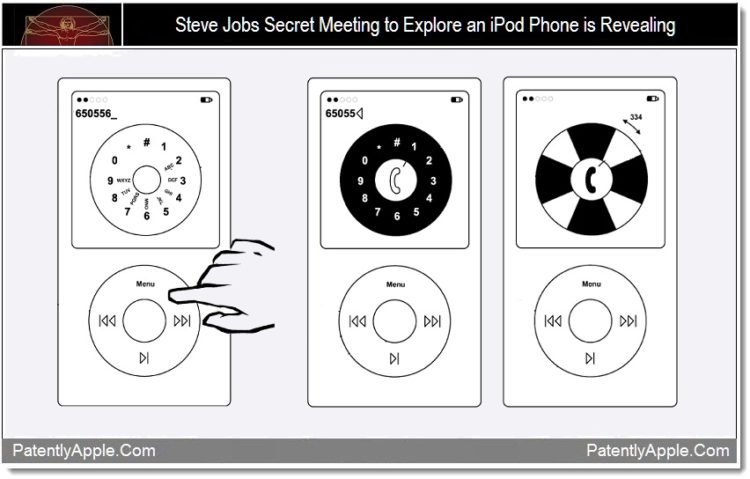Subscribe to blog updates via email »
Ode to the Unfinished – Love Your Work, Episode 272
 There’s a reason the expression, “unfinished business” has such provocative power. Unfinished projects stack up like skeletons in our cluttered mental closets. We know if we crack open that door, we’ll be reminded of our failed intentions, our foolish optimism, and our broken promises – to others and to ourselves.
There’s a reason the expression, “unfinished business” has such provocative power. Unfinished projects stack up like skeletons in our cluttered mental closets. We know if we crack open that door, we’ll be reminded of our failed intentions, our foolish optimism, and our broken promises – to others and to ourselves.
But unfinished business doesn’t get the credit it deserves. Unfinished projects are a valuable and necessary part of the creative process. They build skills and plant seeds of ideas for future projects. And even when a project seems as if it’s unfinished, sometimes it’s not.

WANT TO WRITE A BOOK?
Download your FREE copy of How to Write a Book »
(for a limited time)
Listen to the Podcast
- Listen in iTunes >>
- Download as an MP3 by right-clicking here and choosing “save as.”
- RSS feed for Love Your Work
The iPhone came from unfinished business
We wouldn’t have the iPhone if it weren’t for unfinished business. When Steve Jobs set out to make a phone that didn’t suck, he drew upon unfinished projects, and he left unfinished projects in his wake.
The iPhone we know and love – and all the imitation ancestor smartphones it spawned – may seem like an obvious invention. But at the start of the project, it was far from obvious.
A trackwheel phone!?
From the beginning, the iPhone was built upon the foundation laid by the iPod. The iPod had transformed Apple’s business. iPod sales were forty-five percent of Apple’s revenue in 2005.
But in the early 2000s, when you left the house, you had a dilemma: Do I bring my phone, my digital camera, my iPod – or some combination of the three? Jobs had seen how the digital camera market was getting eaten up by phones that had cameras. That was one less device you had to carry with you. He knew the iPod’s market share would erode, too, as soon as there was a decent phone that could hold music. If Apple could develop that phone, they could stay alive.
So the first iPhone prototypes looked like iPods. You’d use the iPod’s then-famous trackwheel not only to navigate through menus, but also to select letters to type with, or numbers to dial the phone.

via Patently Apple
Fortunately, this trackwheel phone became unfinished business. But the winning prototype also created unfinished business.
The iPhone killed the iPad
After toying with the trackwheel phone for months, it became apparent that Apple might want to explore another approach. So, Jobs and the other executives assigned another team to develop a different prototype.
This time, they would develop a multitouch prototype – one where you’d actually use your fingers on a screen to interact with the phone. Apple had been experimenting with touch for many years now, such as when they developed their trackpad. There was one project they already had in the works that they borrowed from to develop the iPhone we know today.
Apple had been working on a tablet computer with multitouch technology. Not only would you touch the screen on this tablet to “click” on items, or drag them around, but it could also sense various gestures, such as swipes, or even multiple fingers.
So, Apple drew upon the technology from this tablet-computer project to use that technology in their phone project. They essentially placed what would become the iPad on hold, thus making more unfinished business.
Creativity is messy
Let’s stop for a second to think about how horrible it would be to use a trackwheel phone. You’d have to run your thumb over a trackwheel circle to find the letter you’d want to type, then click on the center of the wheel to select the letter. Or, you’d have to click on the right part of the circle to activate the corresponding letter. You’d have to do this to dial phone numbers, or select applications, enter names into your address book, or – God forbid – to write text messages.
It’s obvious to us now this is a horrible idea. But that’s because we’ve used the iPhone. Creativity is a messy process. What will later seem an obviously bad or great idea will not be obviously such when you’re in the thick of a project.
Want proof? In the process of making history, the smartest product designers and engineers in the world, including Steve Jobs, spent months exploring a trackwheel phone. Not only that, but at the end of those months, they said to themselves, “Hey, maybe there’s a better way?” They didn’t kill the trackwheel phone, though. They merely started working on another prototype in parallel.
You’d think that as soon as they saw multitouch, it would have been obvious it was the better solution. But instead, even after six more months, working on both the trackwheel and multitouch versions of the phone, the solution still wasn’t clear.
As Walter Isaacson describes in his biography of Jobs, the executives had a meeting to finally commit to one of the paths – and it still wasn’t an easy decision. They hadn’t figured out how to make the trackwheel experience elegant. They saw potential in the multitouch experience, but they weren’t sure it was technically possible. Isaacson says this was what Jobs liked to call a “bet-the-company moment.” They finally killed the trackwheel phone, and pursued the multitouch phone, unsure if they could make it work.
Professionals make unfinished business on purpose
So, by deciding to pursue the multitouch phone, instead of the trackwheel phone, Jobs and the other executives deliberately created two kinds of unfinished business. One: they killed the trackwheel phone. All the time and energy they put into that project essentially went to waste. Two: They killed their multitouch tablet computer. They had to divert resources from that project, to give this multitouch phone a shot.
But notice none of this is a surprise. Notice we use words like “prototype,” and when you’re making two different versions of the same product, you’re pretty sure one of those paths will become a dead end.
This is very different from the way most of us work when we’re first learning how to be creative. We start a project assuming we’ll finish it. But when we realize it won’t turn out as we envisioned, we quit. And we feel bad. We lament our “shiny object syndrome”, and fall into a downward spiral of guilt. We feel bad that we can’t finish projects, so we don’t start projects, to avoid feeling bad if we don’t finish them.
But professional creatives and dilettantes aren’t so different. Both professionals and dilettantes start projects, and fail to finish them. But professionals know what to expect. They try multiple approaches, knowing they’ll scrap some. They also know that even when it looks like a project is over, it’s not over.
The unfinished business that was the key to iPhone’s success
The day after Steve Jobs introduced the iPhone to the world, he called VP of operations, Jeff Williams. There was a problem with the phone. He said, “I’ve been carrying this thing around and it’s scratched in my pocket.”
Those of us who had a first-generation iPhone know, it’s always had a glass screen. But once again, the obvious solution isn’t always obvious – or possible. The iPhone that Steve Jobs introduced on-stage in January of 2007 didn’t have a glass screen – it had a plastic screen.
Jobs told Williams, “We need glass.” Williams explained that yes, it looked like as technology evolved, it would be possible to have glass screens on future iPhones, but all the current technology they had tested broke when dropped, every time. “No, no, no,” Jobs said. “You don’t understand. When it ships in June, it needs to be glass.”
“Shut up and let me teach you some science”
Jobs called the CEO of Corning, Wendell Weeks, who came to visit Apple in California. Weeks probably wondered why Jobs had bothered, because he started going on about how it was impossible to make a strong, scratch-resistant glass, good enough for a mobile phone. He had learned a lot about glass, building Apple retail stores around the world.
Weeks finally said, “Can you shut up and let me teach you some science?”, then drew on the whiteboard, explaining an ion-exchange process that made a super-strong compression layer on the surface of the glass.
Jobs wanted the glass, but there was a problem: This glass was unfinished business. Corning had developed it way back in the 1960s, but, it was a failed project. They never found a market for it, so they stopped making it. When Jobs told Weeks he wanted this glass for the iPhone launch in six months, Weeks had to break the bad news to him. “We don’t have the capacity,” he said. “None of our plants make the glass now.”
Jobs is of course famous for his reality-distortion field, so he pushed Weeks, telling him, “Yes, you can do it. Get your mind around it. You can do it.” Weeks converted Corning’s Harrisburg, Kentucky plant into a full-time factory for iPhone screens, practically overnight.
“We couldn’t have done it without [your unfinished business]”
So the iPhone that has transformed the way we communicate and live came from unfinished business. Apple had to start work they knew they wouldn’t ship to make it happen. And they had to create unfinished business by diverting resources from that tablet-computer project – which of course finally became finished business years later, in 2010, when it launched as the iPad.
Thankfully, Corning had gone through the trouble of making a super-strong glass, not knowing what they would need it for. It sat on the R&D shelf for decades before it became finished business – now known as “gorilla glass.”
Corning CEO Wendell Weeks received a memo o n the day the iPhone launched, which he later framed and hung in his office. It was from Steve Jobs, and it underlines the power of Corning’s unfinished business – which they later made finished. The note said, “We couldn’t have done it without you.”
Steve Jobs introducing the iPhone image: Dan Farber
Thank you for having me on your podcasts!
Thank you to Andrew Skotzko for having me on Make Things That Matter. As always, you can find all podcasts I’ve been on at kadavy.net/interviews.
Digital Zettelkasten now on Audible!
New Audible users listen free through this link. Also available on other platforms.
Join the Patreon for (new) bonus content!
I've been adding lots of new content to Patreon. Join the Patreon »
Subscribe to Love Your Work
Listen to the Podcast
- Listen in iTunes >>
- Download as an MP3 by right-clicking here and choosing “save as.”
- RSS feed for Love Your Work
Theme music: Dorena “At Sea”, from the album About Everything And More. By Arrangement with Deep Elm Records. Listen on Spotify »


